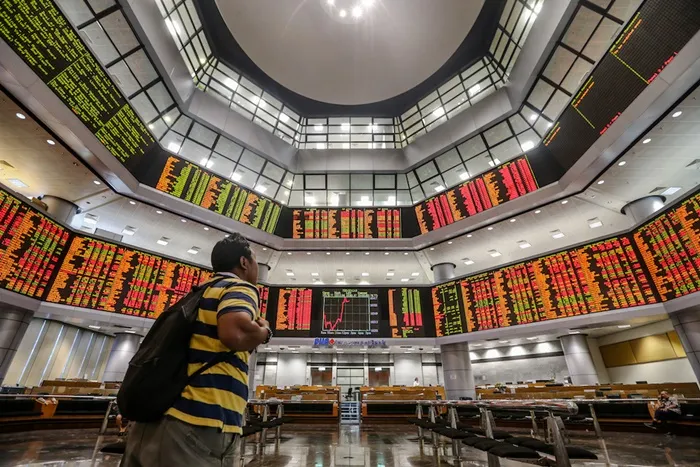Global Chinese tech giant Xiaomi Corporation continues to strengthen its positioning in the Southeast Asia market by targeting to launch a total of 200 artificial intelligence of things (AIoT) products within the Southeast Asia (SEA) region and specifically, Malaysia.
According to Xiaomi Country Manager for Malaysia and Singapore, Eddie Huang, this target was mainly driven by the region’s young demographic, their high purchasing power and their hunger for more sophisticated offerings, especially for the higher-end market.
“We want to focus primarily on smartphones but at the same time, we also want to emphasise our artificial intelligence of things (AIoT) products, as consumers tend to prefer more technologically advanced products in the premium market,” he said.
However, Huang stressed the need to keep high-end products at affordable prices to enable the medium market with accessibility to cutting-edge Xiaomi products.
“The competition among smartphone companies continues to remain strong within the region, which is why we have to set Xiaomi apart from the rest of its competitors. That is evident in the products that we offer for the premium market,” Huang opined.
Premium AIoT Products
He said two years ago, Xiaomi started collaborating with Leica by becoming its exclusive partner, and in 2023, the tech giant introduced its first premium product in Malaysia.
Earlier in February 2024, Xiaomi launched its second premium product line, namely the Xiaomi 14 series which features the Xiaomi 14 Ultra Photography Kit that can be attached to the smartphone and transformed into a smart camera.
“When consumers look for a smartphone to purchase, we notice that the camera is one of the main features that could tip the balance between whether they should buy it or not. Realising this, we introduced the Photography Kit that could be fitted to Xiaomi smartphones to target the higher-end market.
“This would be more attractive to younger consumers with high purchasing power. Hence, we believe that products like these would do very well in the Malaysian market,” Huang commented.
When the brand finally launched the Xiaomi 14 series in mid-March, the first-day sales experienced a 400% increase compared to the launch of its previous version.
“This significant growth boosted our confidence, demonstrating the consumers’ desire for better products,” he told The Exchange Asia in an exclusive interview.
However, Huang noted that in order to cater to a diverse target audience, Xiaomi provides a variety of product offerings to consumers from the younger generation as well as those within the middle- and higher-end market with the Redmi and POCO products.
While Xiaomi products cater to the higher-end market, Redmi offers attractive specs at affordable prices, while POCO is more known for its gaming capabilities.
According to Huang, many other smartphone brands are also implementing a similar brand positioning strategy, which is why Xiaomi is now focusing on introducing a line of smart home products that would make the brand stand out from its competition.

Integrated Smart Home Ecosystem
With its headquarters located in China, Huang said that the Xiaomi brand is also synonymous with a whole line of smart home solutions that can be interconnected to enable users to have total control of other Xiaomi products within the home.
Some of the products include humidifiers, air purifiers and televisions.
“Because many other brands tend to offer a number of standalone smart home products, consumers would end up having numerous products from a variety of smart device companies scattered around in their home.
“In Hong Kong, we offer the full range of smart home products in our stores that can be integrated with each other, which is what we are hoping to bring to consumers in the Malaysian market,” Huang said, adding that the brand plans to have a 40% increase in its AIoT segment.
He revealed that currently, Xiaomi has about 170 AIoT products introduced in SEA countries, including Malaysia, and it plans to add many more before the end of the year.
Huang also noted that Xiaomi is looking into the possibility of setting up service centres around Malaysia to better serve the consumers within the region, as the country has been a significant market for the brand for the past 10 years.
“The SEA market represents a huge chunk of Xiaomi’s market share, so we believe it would be advantageous to develop Xiaomi centres here as the country has a large number of talent with multilingual capabilities, which will provide ease of communication with China companies like Xiaomi.
“In terms of gross domestic product (GDP), Malaysia is one of the highest-performing in SEA, making Malaysia the perfect testing ground to introduce new business models or when bringing success business cases from China.
Tapping Into the EV Market
On another note, Huang highlighted Xiaomi’s venture into the electric vehicle (EV) sector, which was based on the public’s growing interest in renewable energy solutions.
“Xiaomi is indeed strong in smartphones and AIoT products, but we also see that the market is getting bigger and bigger as our consumer base grows more diverse. So that is why we started to venture into the EV segment 3 years ago, and recently, we managed to get our SU7s out to the market,” Huang commented.
According to a news report, the entry-level SU7 from Xiaomi costs around US$4,000 (RM18,808) less than Tesla’s Model 3 base model in China. Following the sale of over 7,058 units of the SU7 in April, Xiaomi became the 8th largest EV upstart in Malaysia.
The company is targeting more than 100,000 deliveries this year, corresponding to monthly average sales of 11,618 units for the remainder of this year.
Moving forward, Huang reveals that the Southeast Asia region is expected to remain one of the strongest markets over the next 2-3 years, globally. This is mainly due to its relatively young population, strong purchasing demand, and continuous influx of foreign direct investments.
“Having that in mind, we remain optimistic and, from Xiaomi’s perspective, we are aiming to increase our average selling price (ASP) and improve our market share in the region,” Huang concluded.






